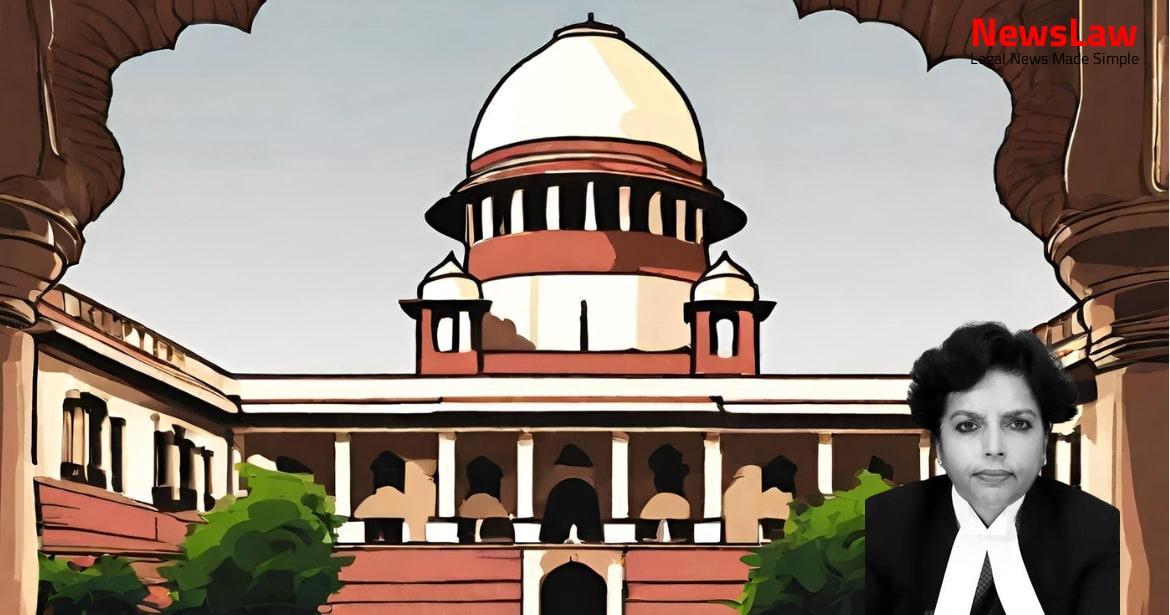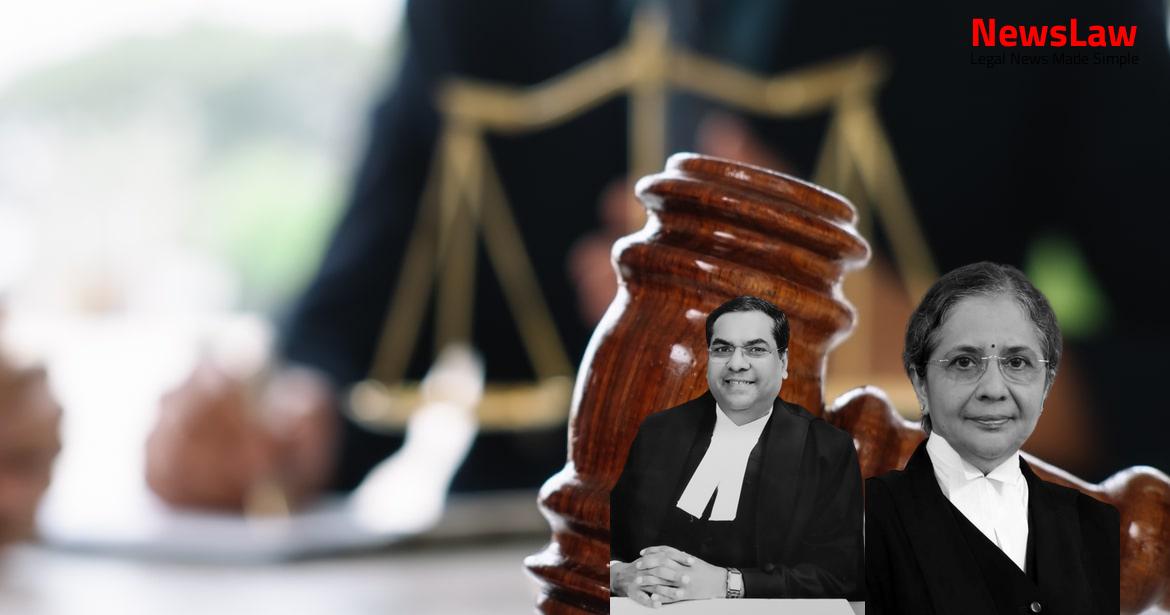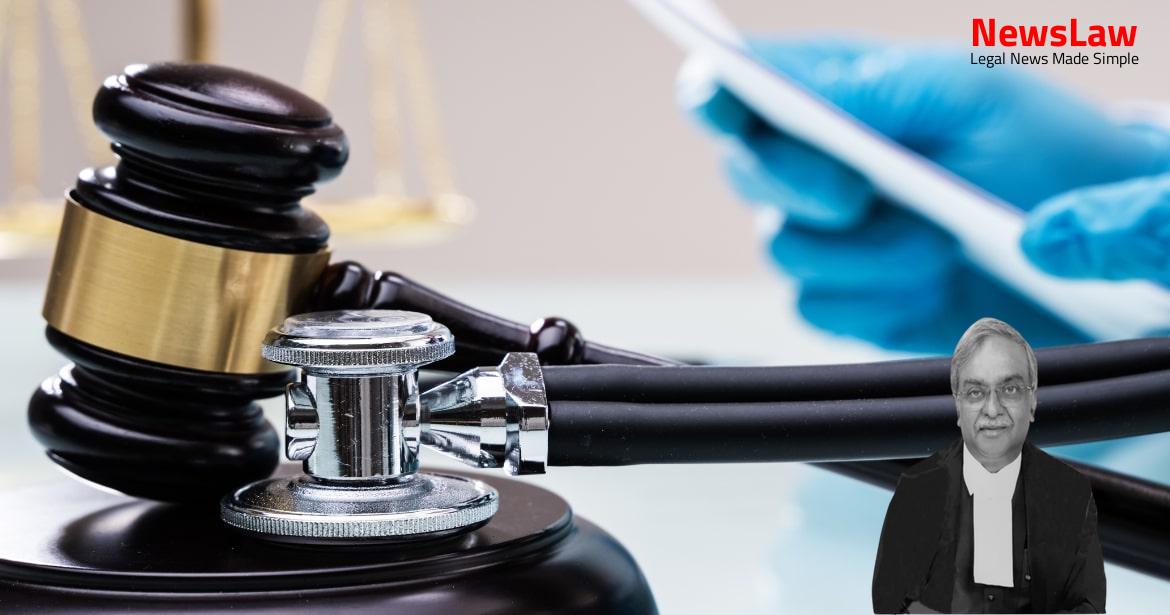Explore the detailed legal analysis undertaken by the High Court in a pivotal case involving witness testimony and the reversal of trial court judgments. The court’s scrutiny of witness credibility, inconsistencies in testimony, and the reevaluation process sheds light on the complexities of legal proceedings. This blog post delves into the nuances of witness testimonies and the significance of court interventions in ensuring justice is served.
Facts
- The High Court confirmed the conviction of accused no.6 and convicted accused nos.2 to 5 for various offenses.
- The witnesses PW-1 and PW-2 were considered truthful and consistent by the High Court.
- The High Court found that the trial court erred in disbelieving the evidence of PWs-1 to 3, who testified to the occurrence of the incident as alleged.
- The prosecution successfully proved the charges against accused nos. 2 to 5 for the murder of the deceased and causing injuries to PWs-1 and 2.
- The complainant and her husband were attacked by all the accused with weapons near the Government Hostel.
- The accused inflicted fatal wounds on the complainant’s husband using weapons like axe, stick, pickaxe, and stone.
- The complainant rescued her husband, but the accused followed them and continued the assault.
- Accused no. 1 assaulted the deceased with an axe on the left cheek, while other accused used different weapons to attack.
- The relationship between the accused and the complainant is detailed, with A-1 being the father of the complainant and others being uncles, sons of A-1’s sister, or sisters of A-1.
- The necessary facts and prosecution’s case are summarized for the disposal of the appeal.
Also Read: Supreme Court Judgment on Single Till Mechanism for HRAB Calculation: A Comprehensive Analysis
Arguments
- The High Court committed error in reversing the well-reasoned judgment of the trial court.
- Evidence from the autopsy conducted on the deceased and the postmortem report revealed contradictions with the prosecution’s case timing of the assault.
- Counsel cited the case of Moti & Ors. v. State of U.P to support the argument.
- The trial court’s decision was considered a possible view, and reliance was placed on the judgment in Shivaji Sahabrao Bobade & Anr. v. State of Maharashtra.
- Reference was made to the scope of appeal against acquittal under the Code of Criminal Procedure, 1973.
- The presumption of innocence of the accused was highlighted with reference to the judgment in V.N. Ratheesh v. State of Kerala.
- Material contradictions between medical evidence and ocular evidence were pointed out, questioning the High Court’s interference with the trial court’s judgment.
- A plea was made to modify the conviction to one under Section 304-II, IPC, if the primary argument was not accepted.
- The respondent argues that the relationship between the accused and PWs-1 to 3 should not be a ground to discard their evidence.
- The State of Karnataka’s counsel contends that the trial court’s findings supporting acquittal are perverse and erroneous, and it is within the appellate court’s authority to reevaluate and reverse them.
- The rustic nature of the village witnesses (PWs-1 to 3) and the time lapse between the incident and their depositions should not invalidate their testimony, as pointed out by the High Court.
- Minor discrepancies in the witness testimony are common and not substantial enough to dismiss their credibility.
- The trial court’s decision to disregard their testimony due to their relation to the case is criticized by the respondent.
- The common objective shared by the accused to commit the murder of the deceased supports the conviction under Section 302 read with 149 IPC, as upheld by the High Court.
- References to previous court cases, such as Shivaji Sahabrao Bobade, highlight the restricted scope of appeals against acquittals, especially when dealing with rural witnesses.
- The power of the appellate court in appeals against acquittals is discussed, emphasizing the need for compelling reasons to interfere with the trial court’s findings.
- The precedent set in cases like V.N. Ratheesh and Kanhaiya Lal further supports the principle of limited interference in appeals against acquittals.
- The argument concludes by asserting that the evidence given by PWs-1 to 3 is deemed trustworthy and natural, despite any minor discrepancies or rural nature of the witnesses.
Analysis
- The testimony of PW-1 is consistent with her complaint and allegations in Ex.P-1.
- The injuries found in the postmortem report (Ex.P-6) support the allegations against accused nos. 2 to 5.
- Minor discrepancies in timelines do not affect the overall reliability of the witness accounts.
- Contradictory portions of PW-14’s statement should be discarded if not significant.
- Omissions in earlier statements regarding trivial details do not dent the witness credibility.
- Contradictions on material points do not warrant rejection of the entire testimony.
- The trial court’s disbelieving of PWs-1 to 3 based on minor contradictions was deemed erroneous.
- The witness accounts are deemed natural, trustworthy, and reliable when considered with medical evidence.
- Reappreciation of evidence on record justified the reversal of the trial court’s findings on witness credibility.
- The witness relationships to the deceased and accused should not be sole grounds for disbelieving their testimony.
- Relevance of witness testimony and consistency with other evidence forms the basis for reliability and acceptance in court proceedings.
- Contradictions in material particulars are required to discredit the testimony of witnesses
- Minor contradictions are not sufficient to discredit witness testimony
- Omissions should be in material particulars to affect witness credibility
- The case of Narayan Chetanram Chaudhary & Anr. v. State of Maharashtra considered minor contradictions in witness testimony
- The High Court rightly reversed the judgment of the trial court and convicted the appellants.
- There is no merit in the contention of the appellants for modifying the conviction under Section 302, IPC to Section 304-II, IPC.
- Judgments relied on by the appellants’ counsel do not support the case for error in the High Court’s decision.
- The assault leading to the death of the deceased was intentional and all accused had a common object, leading to their conviction under Section 302/149, IPC.
Also Read: Selection and Appointment of Judicial Officers in Himachal Pradesh
Decision
- No merit found in the appeal
- The appeal is dismissed
Case Title: RAJENDRA @ RAJAPPA Vs. STATE OF KARNATAKA (2021 INSC 219)
Case Number: Crl.A. No.-001438-001438 / 2011



